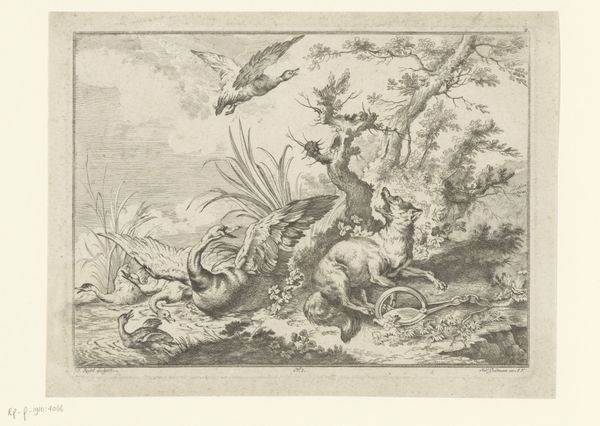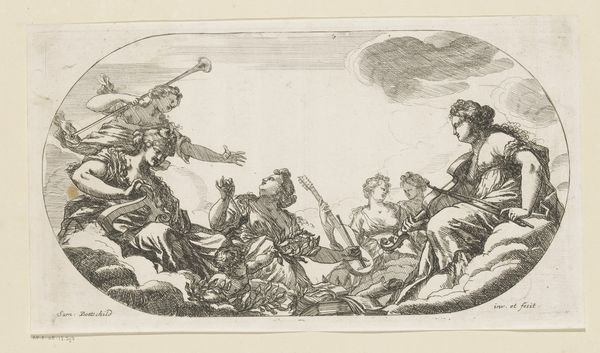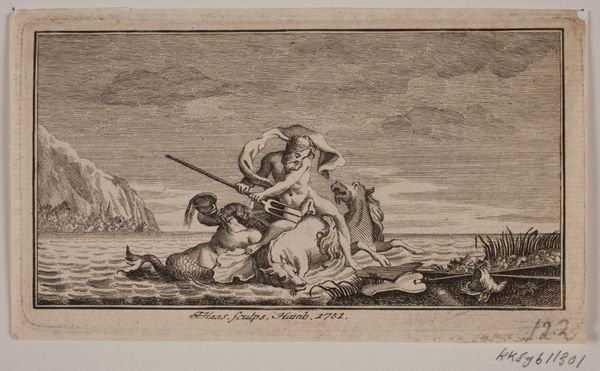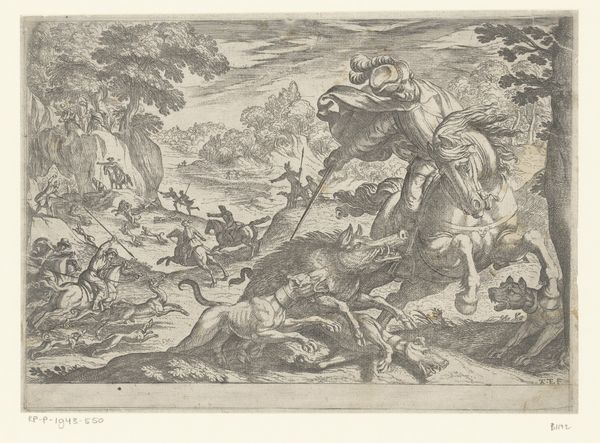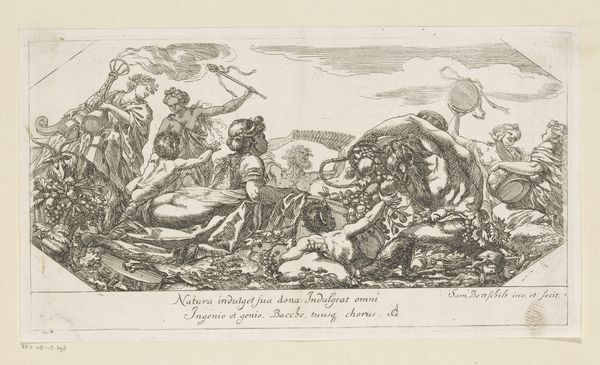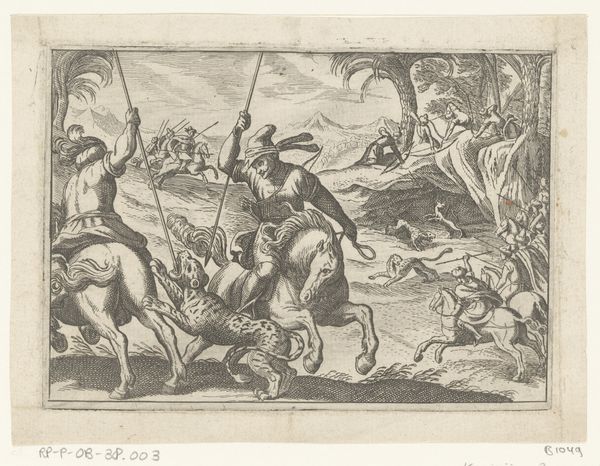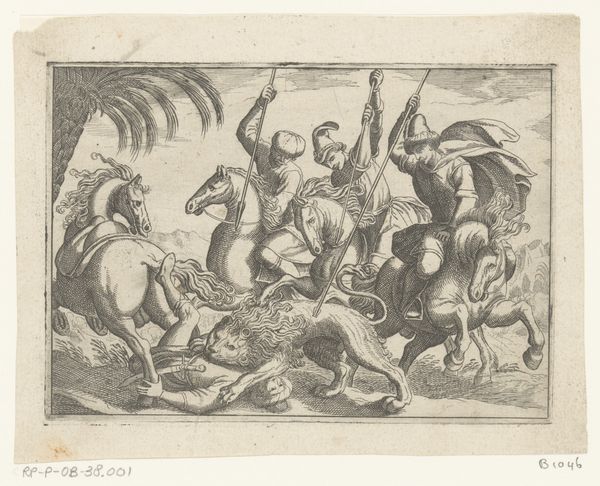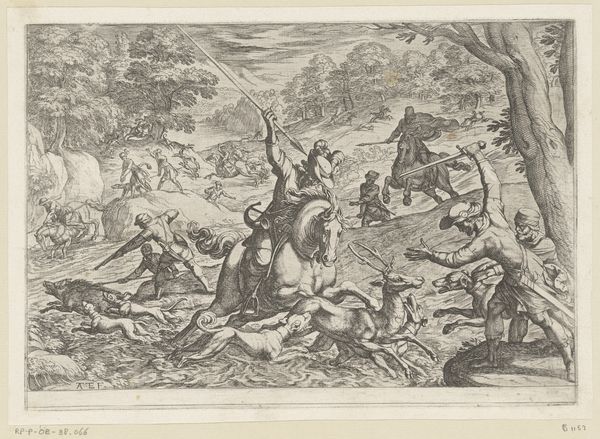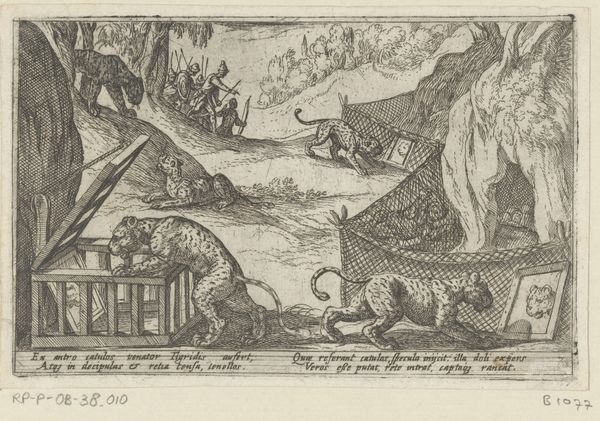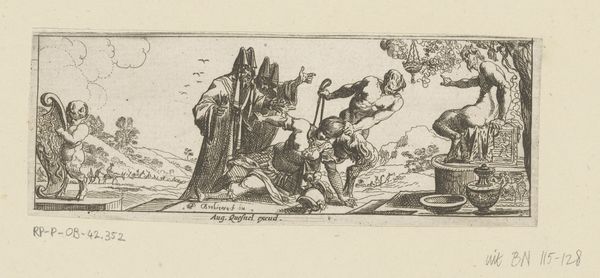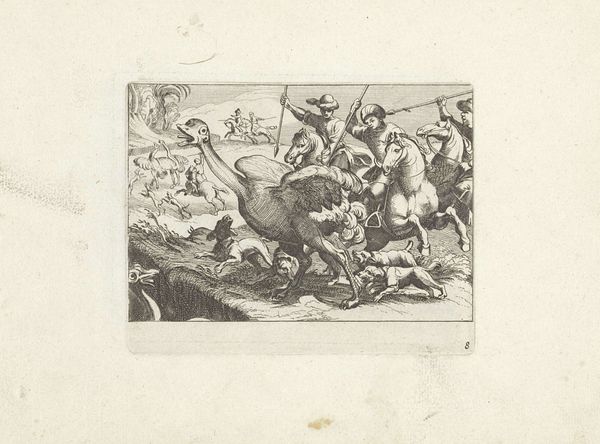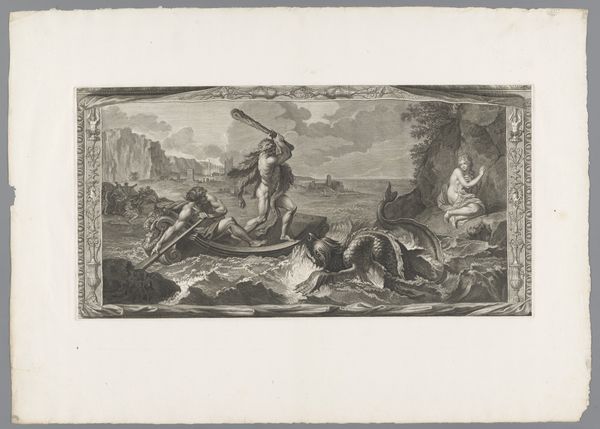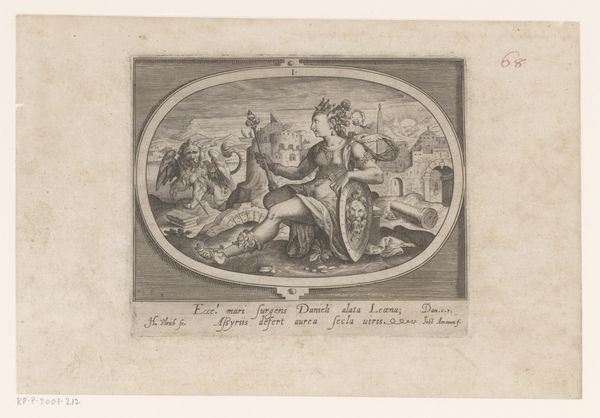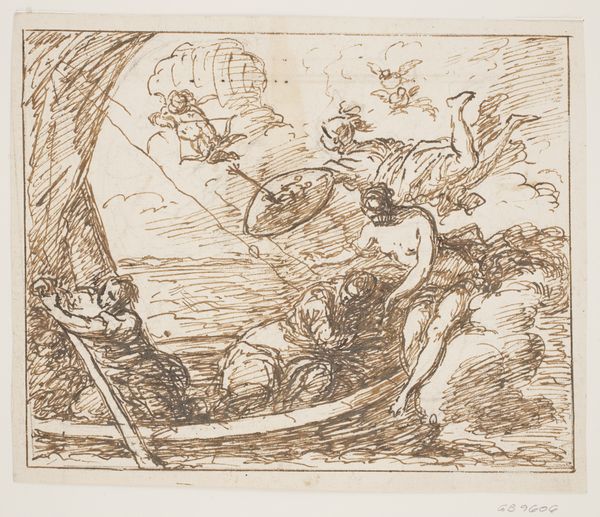![Neptun. Illustration til Jacob Fosie, "Lære-Klude [...] eller Prøver paa Kaaber, Slibe, Grunde, Naale, Etz-Vand, Sverte, Viske, Lade og Trykke fra Aar 1741 til Aar 1743" by Jacob Fosie](/_next/image?url=https%3A%2F%2Fd2w8kbdekdi1gv.cloudfront.net%2FeyJidWNrZXQiOiAiYXJ0ZXJhLWltYWdlcy1idWNrZXQiLCAia2V5IjogImFydHdvcmtzL2U1OGViYmI2LTM5ZTEtNDM4Yi05MGY2LWUwYjFlZmM3NDhjMy9lNThlYmJiNi0zOWUxLTQzOGItOTBmNi1lMGIxZWZjNzQ4YzNfZnVsbC5qcGciLCAiZWRpdHMiOiB7InJlc2l6ZSI6IHsid2lkdGgiOiAxOTIwLCAiaGVpZ2h0IjogMTkyMCwgImZpdCI6ICJpbnNpZGUifX19&w=3840&q=75)
Neptun. Illustration til Jacob Fosie, "Lære-Klude [...] eller Prøver paa Kaaber, Slibe, Grunde, Naale, Etz-Vand, Sverte, Viske, Lade og Trykke fra Aar 1741 til Aar 1743" 1741 - 1745
0:00
0:00
print, engraving
#
baroque
# print
#
figuration
#
line
#
history-painting
#
engraving
Dimensions: 52 mm (height) x 94 mm (width) (plademaal)
This illustration of Neptune by Jacob Fosie, dating from around 1741 to 1743, depicts the god of the sea wielding his trident. It is an emblem of power and dominion over the marine world. Notice how Neptune's stance and bearing echo classical depictions of emperors and gods. The trident, his signature attribute, is not merely a weapon but a scepter, a symbol of his rule. The sea horses that draw his chariot are themselves evocative symbols, blending equine strength with aquatic mystery. Consider how the motif of a sea god, a figure of control over the untamable waters, recurs throughout history. From Poseidon in ancient Greece to this rendering of Neptune, the archetype persists. The trident, too, evolves; it appears in various forms, sometimes associated with lightning, reflecting a broader connection to elemental forces. The image taps into our collective fascination with the sea, a realm of both opportunity and peril. This Neptune embodies a powerful, perhaps even threatening, figure. It resonates on a subconscious level, stirring primal emotions tied to the vast, unknowable depths of the ocean. The cyclical return of these symbols demonstrates their enduring significance, adapted and reinterpreted across centuries.
Comments
No comments
Be the first to comment and join the conversation on the ultimate creative platform.
